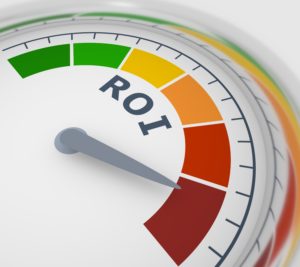Energy costs have skyrocketed to unprecedented heights in late 2021, largely due to the gap between supply and post-pandemic demand. Inventories for energy sources such as coal, natural gas, and fuel oil are low relative to prior years. Unfortunately, this means that while both residential and commercial demand for fuel is rising, supply is squeezed — and costs may continue to rise. Here’s everything you need to know about the state of the global energy market and what it could mean for your business.
Climate Effects on the Global Energy Market
Forecasts from sources such as the Farmer’s Almanac suggest we will be facing a brutally cold winter in the Northern Hemisphere. Melting icecaps spurred by global warming have disrupted the polar vortex, which generally contains the Arctic atmosphere. Now, that cold air is expected to spill southward, bringing a chilling winter season.
The colder it gets, the higher the demand for energy as both individuals and businesses turn up the heat. Extreme cold has also been shown to shut down grids, as in Texas during January 2021. This squeezes supply, resulting in a surge in demand. With higher costs — no matter the source — people may be facing outages and extremely high power bills during an exceptionally cold winter.
Limited Fuel Sources Affecting the Global Energy Market
While coal has been on a downward trend, it is now plugging in the gaps where other fuel sources are in short supply. This has raised prices for coal, even though it is being used less overall. However, coal’s detrimental effects on the environment contribute to climate change as well as public health in mining communities. The use of coal is unsustainable, yet the slight increase in demand has also driven up its cost.
Natural gas is in short supply despite being more commonly used in heating systems. With a cold winter ahead and demand potentially exceeding supply, prices are expected to climb. Some suppliers are investing in natural gas extraction, but after years of declining interest, their production won’t meet demand in time.
Oil is the next best source, although U.S. production certainly dropped during the pandemic. As people stayed home, demand plummeted to 18.2 million barrels per day. This may sound high, but it’s not, compared to pre-pandemic demand. Meanwhile, production decreased from 400 million barrels as of March 2020 to just 270 million a year later. The oil distributors were in surplus until now, when the demand has exponentially increased. This disconnect between supply and demand is driving gas prices upward.
There is also a pandemic-induced labor impact as certain key industries, e.g. truck drivers and other transport staff, have lost their positions or fallen ill due to COVID-19. This shortage has caused others, such as the jet fuel delays in the U.S. earlier this year. Similar trends are happening in the UK thanks, compounded by Brexit and other issues that have driven out international workers. The net impact has been retail outages of gasoline across the UK. While the U.S. likely won’t see as extreme difficulties, its economic climate is also unfavorable to foreign workers and is not offering high enough wages to overcome the lingering concern about the coronavirus.
The Energy Crisis’s Impact on the U.S.
Prices will remain high for the foreseeable future, as the pandemic is not yet over and production likely won’t keep up with demand. There is a disconnect between consumer demand and the safety of the labor needed to meet that demand. Meanwhile, countries that have largely recovered from the pandemic need fuel. As a major energy supplier, the U.S. may end up exporting more oil than it imports. Meanwhile, it will become more expensive to import and ship goods for other industries.
Concerns about climate change and the overall costs and risks of energy production are also restricting supply. Until renewable energy sources become more affordable and sustainable to implement, the U.S. is caught between a rock and a hard place: (a) forced to rely on native fossil fuels for both its consumers and its exports, and (b) struggling to match supply to surging demand.
Altogether, the world is facing extremely high prices and shortages that will impact both domestic and international travel, freight, and markets.
How to Prepare Your Business for the Energy Crisis
As the situation is unlikely to improve anytime soon, the best you can do is be prepared to weather the storm. First, be sure to follow Diversified Energy Supply’s Steps To Prepare Your Diesel Tanks for Winter. Next, be prepared to pay higher prices for fuel — and the freight to bring it to you. Closely evaluate the risks and impacts of fuel prices on your bottom line. If you rely on international or cross-country vendors, it might be time to adjust your supply chain and market.
If you have bulk tanks, you should also prepare them for a cold winter by upgrading your drains and filters to prevent water from seeping in and freezing. Keep emergency winter treatments on hand for worst-case scenarios. Make sure you also have access to retail fuel cards so your fleet and equipment can still obtain gas and diesel as necessary. Consider index-based contracts on a portion of your fuel purchases if you normally buy on a spot-price basis.
Above all else, play it safe. Now is the time to develop contingency scenarios, reduce expenses, and hunker down in preparation for both the literal and economic winter. As the pandemic’s effects fade and the world recovers, the economy should improve as well as the global energy market — as long as businesses make efforts now to handle the crisis.








